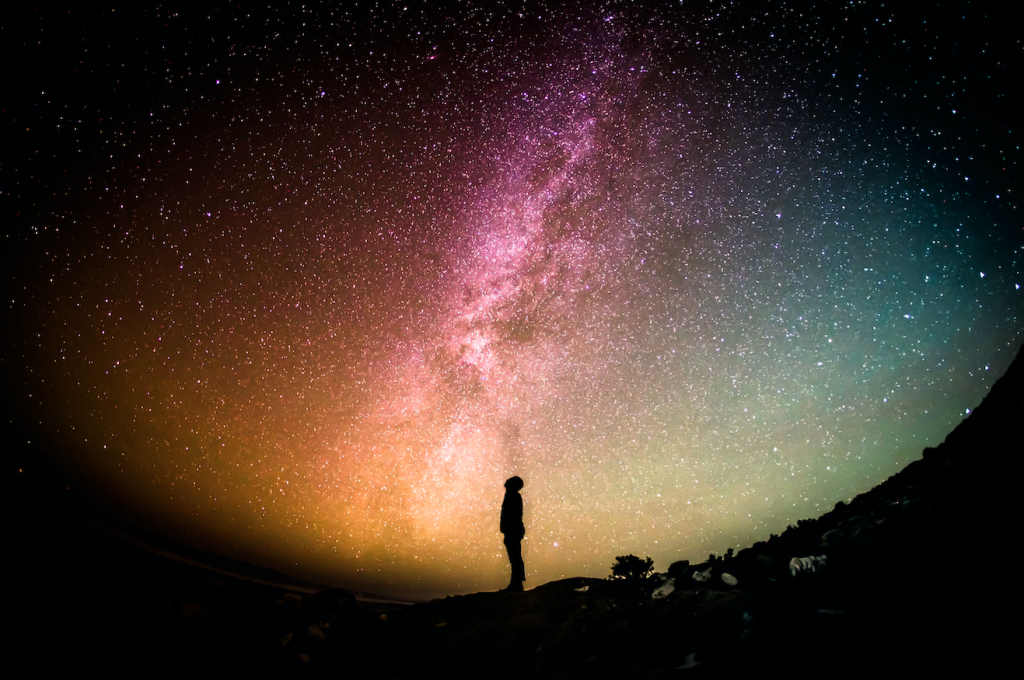 By William Seven
By William Seven
Author and lecturer, Interdisciplinary Science of Cultural Astronomy
Leading member Flagstaff Dark Skies Coalition
In 1994, a magnitude 6.7 earthquake woke up thousands of Los Angeles County residents at 4:30 a.m. With no electricity, the residents of the San Fernando Valley stumbled around in predawn darkness. “Perhaps our neighbors have electricity?” they thought. Seeking help from the people next door, residents quickly discovered electricity was out everywhere and began looking for logical explanations for their bizarre predicament.
Phone calls from these residents started flooding into local police stations and into the Griffith Park Observatory, Los Angeles. Anxious callers asked, “Does what’s going on in the sky have something to do with the earthquake?” Perplexed, civil authorities and astronomers asked witnesses to explain what they were experiencing. It soon became apparent these residents were seeing planets and the countless stars of our Milky Way galaxy for the first time. It was evident the star-filled night sky had such an impact and inspired such awe; residents were feeling uneasy.
This story from nearly 30 years ago is a good example of how disconnected we humans have become from our planet’s environment. This particular type of unnatural environmental impact began 100 years ago with the manufacture of electricity and the need to sell it. As the newly invented light bulb was being produced in mass quantities, cities began joyfully putting up street lights. Not long after, city ordinances were drafted requiring all citizens have exterior lights in front of their properties.
Cities prospered and populations grew. Within a few decades, air pollution, water pollution and light pollution from cities began impacting plants, insects, bird migrations. In the 21st century, scientists continue to warn us that human health is being adversely affected every single day and night. With no clear separation of darkness and daylight, our bodies’ circadian clock is affected, and sleep disorders ensue. Researchers are studying the possibility that constant artificial light exposure in neonatal care units could impair the development of premature babies. Since 1995, studies in such journals as Epidemiology, Cancer Causes and Control, Journal of the National Cancer Institute and Aviation Space Environmental Medicine, among others, have examined female employees working a rotating night shift and found an elevated breast cancer risk is associated with occupational exposure to artificial light at night.
However, there is hope as many humans are fighting back against the unhealthy abundance of skyglow. This is creating a rapidly growing environmental movement across our planet. Many businesses and residential neighborhoods in and around Flagstaff have voluntarily installed shielded lighting fixtures outside their buildings. This simple act of caring isn’t only beneficial to plants, animals and humans, but is an act of a thoughtful neighbor.
For 20 years, members of Flagstaff’s Dark Skies Coalition have worked to make the environment healthier by sharing a common vision: First, to celebrate, promote and protect the glorious dark skies of Flagstaff and northern Arizona, and second, to unite the rest of our planet through our leadership as the First International Dark Sky City in the world. Northern Arizona University has joined this movement by making safe and secure lighting choices on campus.
For 50 years, the city and the university has addressed light pollution—not just for the observatories, but for every citizen’s and student’s right to be able to see the stars at night. Just like their right to breathe clean air and drink clean water.




 By William Seven
By William Seven